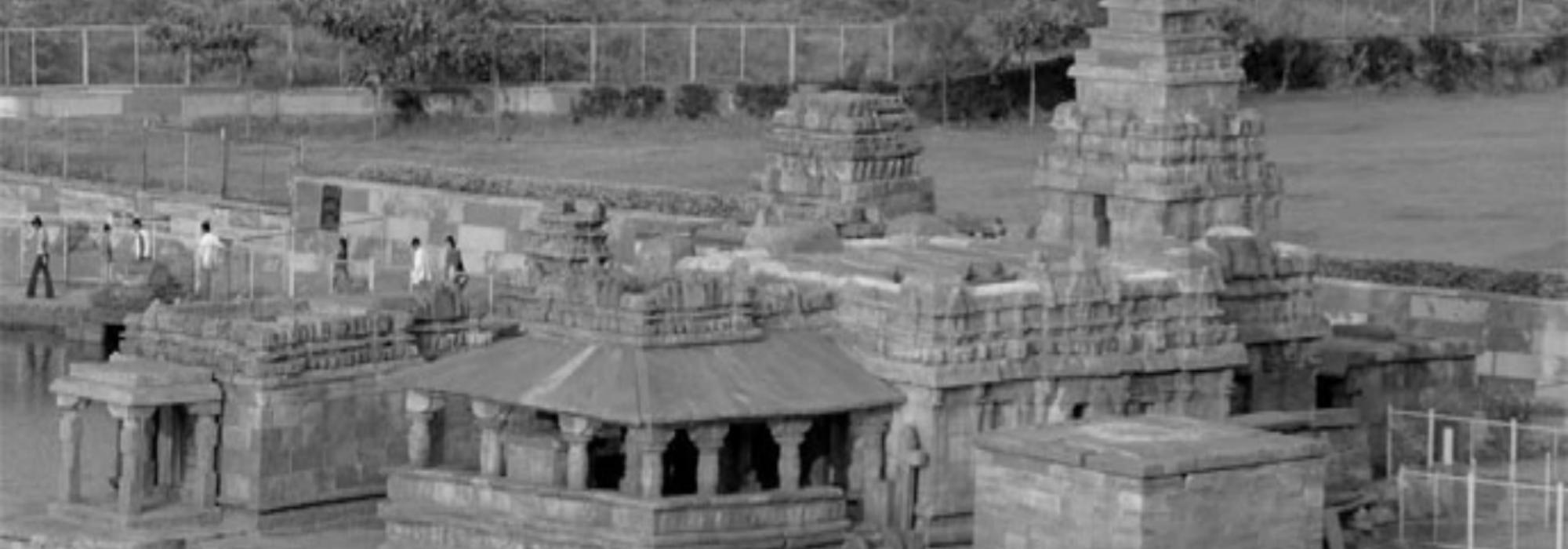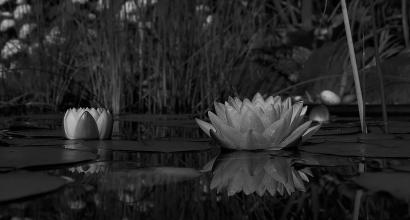Felicitation
The India Government awarded the Mahamahopadhyaya title to Sri Virupaksha Shastri. Our [Mysore] Maharaja awarded him the Vidyanidhi honorific.
And so, in order to express our joy at this, we constituted an Award Committee. B.V. Lakshman Rao (who has been mentioned earlier) was prominent in this Committee. The Award ceremony was fixed at five in the afternoon on a Sunday.
Sri Shastri’s Objection
That day at about four, a few of us gathered at the Shankara Matha. After checking out the arrangements to be made for the event, we went to Sri Shastri’s home to remind him. When we had initially broached this proposal with him, he hadn’t agreed to it. He raised numerous objections. After we insisted in several different ways, he had said, “let’s see.”
It’s for this reason that we were anxious to affirm the matter with this man.
When we inquired at home, he wasn’t available. “It’s been really long since he left,” was the reply. What do we do? We wandered around looking for him at random places. It was four forty-five. Finally we located him.
Sri Shastri was seated on the grass next to the drainage to the west of the temple!
We asked:
“What’s this? Here?
“The Revered Guru will arrive. That’s why.”
Thank God, our Guru is right here—we consoled ourselves. Ten minutes later we emerged outside and checked again. Sri Shastri wasn’t there. We thought again. We couldn’t figure out who he had meant when he’d referred to as his “Revered Guru.” Deciding to let things take their course, we sat in the car and turned at the fifth main road in Chamarajapet. And there, near the cross road, our Guru was walking in quick strides.
Us: “Where’s the journey headed towards?”
Sri Shastri: “Our Revered Guru’s home.”
Us: “Who’s your Revered Guru?”
Sri Shastri: “Vidwan—Sri Nuggehalli Tirumalacharya”
We seated Sri Nuggehalli Tirumalacharya and Sri Virupaksha Shastri in the car and reached the Matha. We had readied an elevated wooden seat for Sri Virupaksha Shastri. The seat was covered with a strip of soft, luxurious carpet.
Sri Virupaksha Shastri seated Nuggehalli Tirumalacharya on it and proceeded to perform Guruvandana (I’ve already described the procedure of this Guruvandana). We then searched the store of the Matha and it took a while before we could find another wooden seat. Sri Shastri sat on this seat.
The speeches followed then.
Response
When it was his turn to respond, Sri Shastri said this:
“All of you are very happy. Even I’m happy. ‘You’re Vidyanidhi,” ‘You’re Mahamahopadhyaya’—indeed, who doesn’t feel happy listening to such things about themselves? Our Maharaja has given this; our Imperial Government has given this. All this is certainly a matter of joy. But then there’s another Maharaja, right? A Raja greater than all the Emperors—Dharmarajah pitrpatih—Dharmaraja or Lord Yama? Some day I must go there. Then he’ll ask me—‘Aha! He gave, and you accepted it! To which Vidya (Knowledge) are you the Nidhi (Treasure)?’—he’ll ask me this—what should I reply then?”
After it was all over, we decided to drop Sri Shastri at his home and accompanied him accordingly. The womenfolk of his home had decorated the front of his house with Rangoli and had prepared to perform an Arati to him. Sri Shastri held Sri Vaidyanatha Shastri standing next to him by the shoulders and made him stand on the wooden plank placed on the Rangoli. Laughing, Sri Vaidyanatha Shastri said:
“Can’t you listen to what others say even for a moment? Aren’t they your daughters?”
V: “Shouldn’t you too regard them as your own daughters?”
Our felicitation efforts concluded in this fashion.
Student Days
Sri Virupaksha Shastri rarely spoke about himself or his personal matters. Neither did he have the time for it. He’d speak a few tidbits mostly by way of context or example in case the occasion called for it.
During his studenthood, he used to live somewhere near [Diwan] Purnayya’s charitable home at Siddikatte. In those days, there was a Brahmin Agrahara in that region. All that has changed now. In Purnayya’s charitable home, in Vasudeva Shastri’s home, and in a few other places, food was arranged for Brahmin students by way of charity, as an act of Dharma. Sri Shastri would take meals in one of these places and lived in a house nearby. Sri Shastri was still unmarried then. He had rented out a room in the house he lived in. Rent was twenty-five paise per month. Electric light had not yet arrived. The arrangement that Sri Shastri had made for his noctural study of texts is something that today’s folks need to listen to.
Before he sat down to study, he would pour a small amount of oil in an earthen lamp, soak the wick in it and light it from the lit lamp [NandAdIpa] that the owner of the house had placed before the Deity in the Puja room. In this light, he would open a palm-leaf manuscript and read the text on one side two or three times. Print wasn’t widely available back then. Each side of the palm-leaf manuscript contained about eight or ten lines of handwritten text in elegant calligraphy.
Sri Shastri would read all of it once from start to end. Then again. Then perhaps once again. After reading it in this manner for two or three times, the lines in the text would stay in his mind. Now he would extinguish the light. He would then step out on the street and reciting aloud the lines from the text, pace back and forth. Then he would affirm within his own mind that he had mastered the text.
Once this was affirmed, he would reenter his room and light the earthen lamp again from the NandAdIpa. This arrangement was to save the expense on oil and matchstick. Now, the next page of the manuscript. He would study that too, in the same manner. Once even that was mastered, the next page from another manuscript. Then he’d revert to the previous page.
This was his method of study.
Addressing Himself
Let’s say that even as he was pacing back and forth while reciting aloud the text of a page, some sentence failed his memory. Then Sri Shastri would grasp his nose with his right hand and loudly slap both his cheeks. But when the lines of the text would flow forth from his mouth in an uninterrupted stream, Sri Shastri would say, “Ah Vamana! You’ve become such a great Vidwan!” This was how he would motivate himself. But if that wasn’t the case, he’d say, “Ah Vamana! You were born such a fool!” This was how he’d also punish himself.
This was the story which he narrated during one of the Vedanta lessons to illustrate the fact that a man witnesses his own ignorance by behaving as if he’s witnessing it not as himself but as an outsider.
To be concluded...
This episode is a part of the iconic D.V. Gundappa’s series of pen portraits in the volume titled Vaidikadharma Sampradaayastharu (Traditional Vedic Scholars) forming part of his acclaimed Jnapaka Chitrashaale (The Art Gallery of Memories).











































